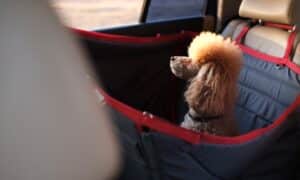In 2001 and again in 2003 The Harvard Center for Risk Analysis looked at the risk of mad cow disease to U.S. citizens and determined the risk to be very low to humans. Their study felt that as long as the FDA and USDA continue with current restrictions to processing ‘at risk’ meat materials into human food and subsequently, with the current restrictions to processing ‘at risk’ animal material into animal feed of ruminants (cattle, sheep, pigs) the risk to humans would remain very low. However it is a different story for our pets. It is legal, acceptable, and common practice for ‘at risk’ materials to be processed into pet food.
Current U.S. rules regarding ‘at risk’ materials originated from an outbreak of mad cow disease in the United Kingdom. During the 1980’s the UK suffered a significant problem with the disease which ended up being responsible for the death of 1000 people. During the height of the problem, it was reported that mad cow disease spread to animals including cats.
When the cats were diagnosed, European pet food manufacturers voluntarily agreed to restrict the processing of ‘at risk’ materials into pet food. “In 1996, however, Agriculture Minister Angela Browning informed the House of Commons that ‘mammalian meat and bone meal-powdered residue from culled and rendered cattle is used in pet food.’ Labour Parliament member and microbiologist Martyn Jones called Browning’s admission ‘an astounding revelation. ‘This stuff is so risky that they are not even allowed to bury it,’ Jones stated. ‘Yet they are getting rid of it by passing it on to pet food manufacturers.’
In the U.S. the FDA’s current regulations allow ‘at risk’ materials to be processed into pet food – yet they also realize this is putting our pets at risk. In 2003 a confirmed diagnosed mad cow disease animal was thought to be processed into pet food. Dr. Lester Crawford of the FDA told United Press International “If we determine that some of it was headed for pet food, we would likely recall that,” Crawford said. But he noted the agency would not take any action until it gets confirmation, which probably will occur on Monday.
The main threat among pets is cats because they “are susceptible to BSE,” he said. Dr. Crawford said there is no way of knowing how much pet food would have to be recalled. But he said the FDA does not consider the infectious agent, called a prion, can be diluted to safe levels, so even if a small batch of infected pet food was mixed with a ton of other food, “the ton would have to be destroyed.” The FDA understands the threat of mad cow disease to U.S. pets, yet they have not bothered to change the regulations to protect our pets.
Recently a congressional panel began listening to testimony regarding ‘at risk’ material and the most recent beef recall. Many have been called to testify including the Humane Society. It seems the Humane Society has completely changed their stance on at risk materials in the past four years. From a 2004 article “”Dr. Michael Greger of the Humane Society of the United States said downer cows that don’t pass inspection often wind up in pet food. They yield much less revenue than those that remain standing. The financial incentive for plant operators and employees, then, is to force hurt and sick cows to stand by any means necessary, rather than put them down, Greger said. “A truly comprehensive ban on meat from downer animals is needed,” he said.
Greger urged lawmakers to support the Downed Animal and Food Safety Protection Act, a bill that would ban processing downed animals. That, he said, would take away the incentive for plant workers to prolong the life of a suffering animal. Instead, he said, all downer cows could be euthanized and used for pet food or other products that don’t involve human consumption.” Sadly today the Humane Society – an organization that is supposed to protect all pets – considers it safe for U.S. pets to consume ‘at risk’ materials. The Humane Society considers it safe for U.S. pets to consume euthanized sick animals and for our pets to consume the euthanizing drug. This is a completely different opinion since August 2004. It causes a pet owner to wonder if any large corporations have made significant donations to the Humane Society since 2004.
Sadly, this is a real threat to U.S. pets. Late February 2008 there was a confirmed case of mad cow disease found in a cow in Alberta, Canada. The good news is that Canada does NOT allow any ‘at risk’ materials to be processed including use in pet food. Let’s hope that the FDA and the USDA will take note of Canadian regulations before something terrible happens here in the U.S. Pet food and pet treat ingredients that could contain processed ‘at risk materials or any euthanized animal are: Meat Meal, Meat and Bone Meal, Meat By-Products, Beef By-Products, Beef By-Product Meal, Animal Fat, and Animal Digest. Please read the ingredient listing of your pet’s food and treats.





